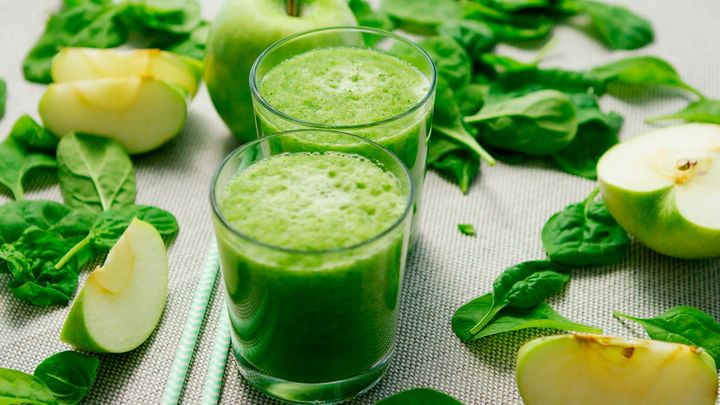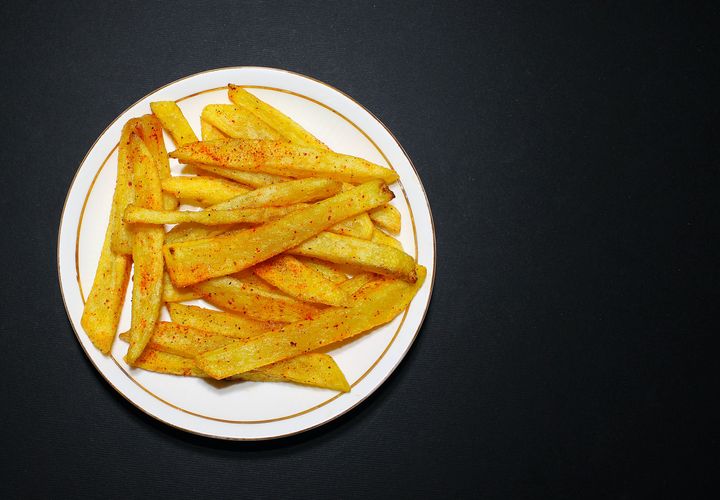Benefits of Oatmeal
What are the Healthiest Oats to Buy?

Oats are one of the greatest sources of important vitamins, minerals, fibers, and antioxidants. Studies have shown that oats and oatmeals can bring a lot of health benefits.

This whole-grain food is also known as “Avena Sativa” scientifically. Here are some of the known benefits of eating your oatmeal for breakfast.
Benefits of Oats
- They’re Incredibly Nutrition Packed
Oats are a good source of carbs and fibers with their nutrient composition is well-balanced.
They also have more proteins and fats than most other grains. From a half-cup (78grams) serving of dry oats, you’ll get about 51 grams of carbs, 14 grams of proteins, 5 grams of fats, and 8 grams of fiber with only 300 calories.
Apart from that, they’re also loaded with important minerals, vitamins, and antioxidants compounds such as Manganese, Magnesium, Phosphorus, Copper, Iron, Zinc, Folate, Vitamin B1 (thiamin), Vitamin B5, and smaller traces of calcium, potassium, vitamin B6, and vitamin B3(niacin). - Powerful Soluble Fiber - Beta Glucan
When we talk about oats, fiber has always been the main topic element.
Particularly, whole oats come with a large amount of Beta-Glucan, a type of soluble fiber that can dissolve partially in water and form a thick gel-like solution in our gut.
It also helps to reduce blood sugar and insulin response, increase the growth of beneficial bacteria in our digestive tract.
The good news for those who are watching or reducing their weight, beta-glucan increases the feeling of fullness after your oatmeal breakfast. - Lower LDL Cholesterol (bad cholesterol)
You’ve probably heard of how LDL cholesterol is a major risk of heart disease.
Multiple studies have shown that the Beta-glucans contained in oats are effective in reducing both the bad cholesterol and overall cholesterol level.
It encourages the excretion of cholesterol-rich bile from your liver, which in turn reduces the circulating cholesterol in your blood.
Some studies show antioxidants in oats can work with Vitamin C to prevent LDL cholesterol oxidation (which causes damages in tissues and can increase the risk of heart attacks and strokes). - Relieve Constipation
Lack of fibers is commonly associated with constipation. More often than not, elder people experience infrequent, or irregular bowel movements that are hard to pass.
Although laxatives may help to relieve the issue, long-term usage also comes with side effects like unhealthy loss of weight and reduces quality lifestyle.
Studies have shown that oat bran (the fiber-rich external layer of grain) can help to relieve constipation in elder people. With the side benefits of also helping them stay healthier. - Rich in Antioxidants
Oats are well-known for their high antioxidant and beneficial plant compounds like polyphenols.
One of the more unique groups of antioxidants, Avenanthramides, is solely found in whole oats.
This group of antioxidants acts as an anti-inflammatory. It is also especially effective in lowering blood pressures by improving the production of nitric oxide.
Nitric oxide may help with better blood flow by dilating the blood vessels.
Ferulic acid is another powerful antioxidant known to help with anti-aging; it is also found in large amounts in oats. - Improve Blood Sugar Control
Significantly elevated blood sugars are a sign of Type 2 Diabetes. This is usually the result of reduced insulin sensitivity.
Oats are also known to help improve insulin sensitivities. The beta-glucan forms a thick gel that delays the emptying of foods in the stomach and absorption of glucose in the bloodstream. - Helps You Stay Full Longer
That powerful soluble fiber that we mentioned above, Beta Glucan is great at delaying the time your stomach takes to empty foods. In turn, it helps you to stay full for a longer time and reduce your calorie intake.
Beta-Glucan is also known to promote the peptide YY (satiety hormone) release in your gut that responds to eating. One of the keys to feeling full longer with oatmeals though was to add in enough proteins when you eat them.
Whole Grains That Packs Everything Great
There are just so many benefits from these whole grains itself and yet it is so simple to prepare.
If you include toppings like fresh berries, fruits, and yogurts, there are even more health benefits for such a simple breakfast.
Now that we know the benefits, the next natural thing to ask is which type of oats are the healthiest?
Types of Oats
All oats are started as groats, the whole, unprocessed grains.
Before being processed, most of these grains are roasted at very low temperatures. This helps to deactivate enzymes that cause oats to go rancid. It also makes them more shelf-stable and adds a nice toasty flavor.
There are three main types of processed oats: rolled oats (old-fashion), Steel cut oats (Irish), and Instant Oats (Quick oats).
The difference between them is just how much they’ve been processed. The result is both the varying texture and cook times.
Steel Cut Oats
The steel-cut oats are sometimes referred to as Irish oats.
The whole oat groats are chopped up into several pieces by a sharp steel cutter. They look like rice that’s been cut into pieces.
Steel-cut oats take the longest to cook and have a more chewy texture. It’s a good option to add texture to stuffing, meatloaf, or even savory congee as an alternative to rice.
Scottish Oats: Some also refer to steel-cut oats as Scottish oats. Traditional Scottish oats are stone-rinded to create broken bits of varying sizes. It results in creamier porridge than steel cutting.
Rolled Oats
Often called the old-fashioned oats or whole oats. They look like flat, irregular round, and slightly textured discs.

The whole groat was first steamed soft, then pressed to flatten.
Rolled oat cooks faster than steel cuts, absorb more liquid, and hold their shapes relatively well during cooking.
In addition, to be heated for a warm breakfast bowl, rolled oats are also commonly used in granola bars, cookies, muffins, and other baked goods.
Instant oats can be used in place of rolled oats, although the cooking time will be much less, and the final dish will not have as much texture.
Instant/Quick Oats
The instant oats sometimes referred to as “quick oats” are the most processed of the three varieties.
They are pre-cooked, dried, and then rolled and pressed slightly thinner than rolled oats.
They can cook more quickly than steel-cut or old-fashioned oats, but retain less of their texture, and are often results in a more mushy form.
Conclusion
All these oats varieties have gone through different levels of processing. The results are different textures and the time required to cook.
Instant Oats is the most processed and possibly has lost a fair bit of nutritional value in the process. While the steel-cut and rolled oats would have the most nutrients.
Overall though, since they are all made from whole oat groats, they all have the same nutritional profile.
Ultimately, if you like sweet, chewy texture with a nutty taste, try the steel cuts. If you prefer the oatmeal to be creamy and smooth, then definitely go for the instant oats.
No matter the type, there should only be one ingredient listed — whole-grain oats, when you buy them off the shelves.
Some flavored instant oats can also come packed with sugars, sodiums, or other artificial ingredients.
We would suggest avoiding those and opt for the plain instant oat instead. You can after all add toppings like fresh berries, Greek yogurt, almond butter, or even fried eggs.
Reference: Types of Oats | The Whole Grains Council


